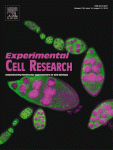Exp Cell Res:多靶抑制肿瘤诱导的血管生成
2012-07-02 Beyond 生物谷
实体瘤的生长和转移需要血管生成,以确保迅速分裂的肿瘤细胞能获得充足的氧气、营养物质和生长因子。 血管内皮生长因子(VEGF)的转录因子是由HIF刺激调控的一个典型例子。化疗或放疗能引起肿瘤组织的缺氧反应,而血管内皮生长因子通过诱导血管生成促进肿瘤的生长和生存,可见VEGF对肿瘤的生长时至关重要的,因此VEGF已成为一个诱人靶标来治疗中晚期肿瘤患者,具体表现在运用一些VEGF的抗体来治疗患者。
实体瘤的生长和转移需要血管生成,以确保迅速分裂的肿瘤细胞能获得充足的氧气、营养物质和生长因子。
血管内皮生长因子(VEGF)的转录因子是由HIF刺激调控的一个典型例子。化疗或放疗能引起肿瘤组织的缺氧反应,而血管内皮生长因子通过诱导血管生成促进肿瘤的生长和生存,可见VEGF对肿瘤的生长时至关重要的,因此VEGF已成为一个诱人靶标来治疗中晚期肿瘤患者,具体表现在运用一些VEGF的抗体来治疗患者。
近日,发表在Exp Cell Res杂志上新研究证明信号素( Semaphorins)受到氧张力变化的影响也可能在肿瘤血管新生中起到关键作用,信号素原本在控制轴突生长和调控免疫相关蛋白表达中发挥作用。通过使用RNA干扰技术,在体外和体内血管生成试验以及肿瘤异种移植实验中,研究人员证实信号素4D(SEMA4D)的表达受转录因子HIF家庭的控制下,其与血管内皮生长因子一起联合促进肿瘤口腔鳞状细胞癌(OSCC)的生长和血管生成。
使用封闭抗体信号素4D后,肿瘤生长和血管生成都有所减少,研究数据证实联合针对VEGF和SEMA4D可能是一种新的抗血管生成治疗口腔鳞状细胞癌及其他实体瘤的新策略。

doi:10.1016/j.yexcr.2012.04.019
PMC:
PMID:
The hypoxia-inducible factor-responsive proteins semaphorin 4D and vascular endothelial growth factor promote tumor growth and angiogenesis in oral squamous cell carcinoma.
Zhou H, Yang YH, Binmadi NO, Proia P, Basile JR.
Growth and metastasis of solid tumors requires induction of angiogenesis to ensure the delivery of oxygen, nutrients and growth factors to rapidly dividing transformed cells. Through either mutations, hypoxia generated by cytoreductive therapies, or when a malignancy outgrows its blood supply, tumor cells undergo a change from an avascular to a neovascular phenotype, a transition mediated by the hypoxia-inducible factor (HIF) family of transcriptional regulators. Vascular endothelial growth factor (VEGF) is one example of a gene whose transcription is stimulated by HIF. VEGF plays a crucial role in promoting tumor growth and survival by stimulating new blood vessel growth in response to such stresses as chemotherapy or radiotherapy-induced hypoxia, and it therefore has become a tempting target for neutralizing antibodies in the treatment of advanced neoplasms. Emerging evidence has shown that the semaphorins, proteins originally associated with control of axonal growth and immunity, are regulated by changes in oxygen tension as well and may play a role in tumor-induced angiogenesis. Through the use of RNA interference, in vitro and in vivo angiogenesis assays and tumor xenograft experiments, we demonstrate that expression of semaphorin 4D (SEMA4D), which is under the control of the HIF-family of transcription factors, cooperates with VEGF to promote tumor growth and vascularity in oral squamous cell carcinoma (OSCC). We use blocking antibodies to show that targeting SEMA4D function along with VEGF could represent a novel anti-angiogenic therapeutic strategy for the treatment of OSCC and other solid tumors.
本网站所有内容来源注明为“梅斯医学”或“MedSci原创”的文字、图片和音视频资料,版权均属于梅斯医学所有。非经授权,任何媒体、网站或个人不得转载,授权转载时须注明来源为“梅斯医学”。其它来源的文章系转载文章,或“梅斯号”自媒体发布的文章,仅系出于传递更多信息之目的,本站仅负责审核内容合规,其内容不代表本站立场,本站不负责内容的准确性和版权。如果存在侵权、或不希望被转载的媒体或个人可与我们联系,我们将立即进行删除处理。
在此留言








#Cell#
61
#抑制肿瘤#
52
#CEL#
45